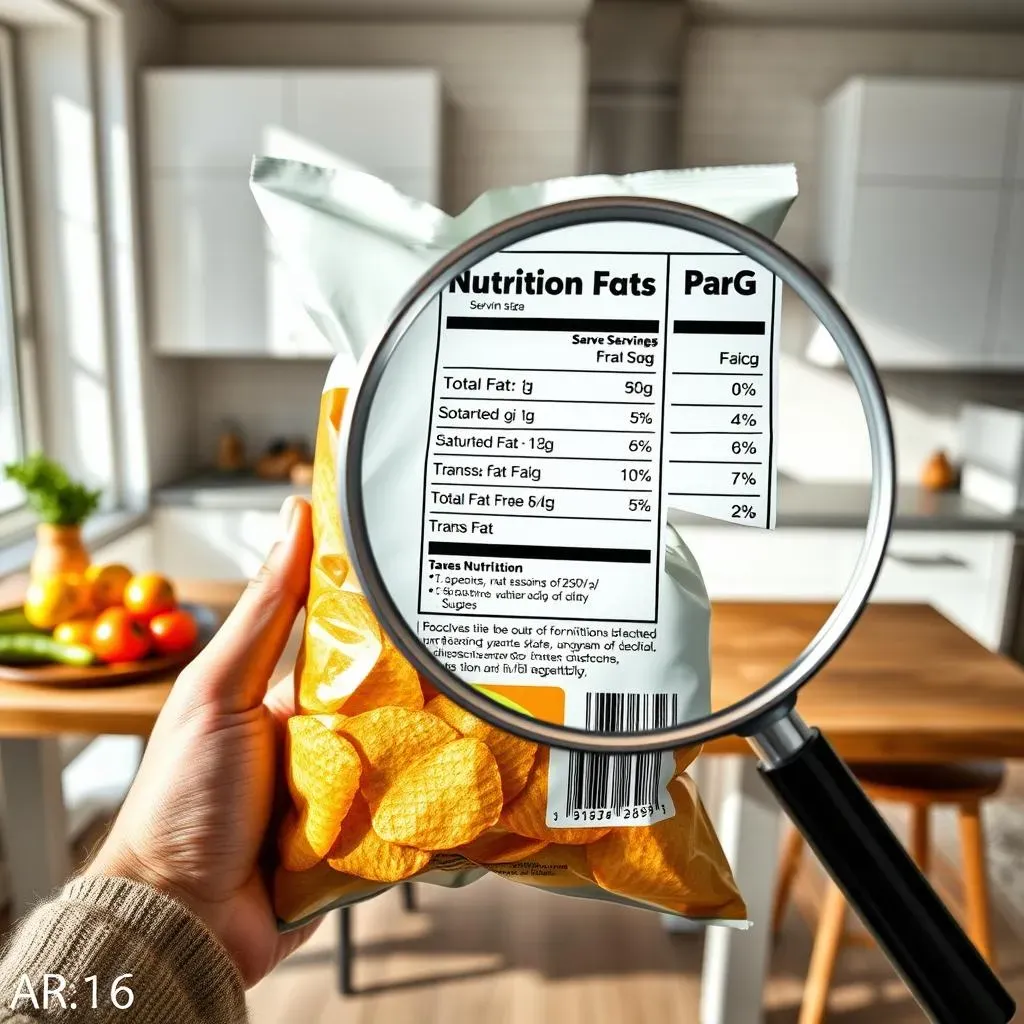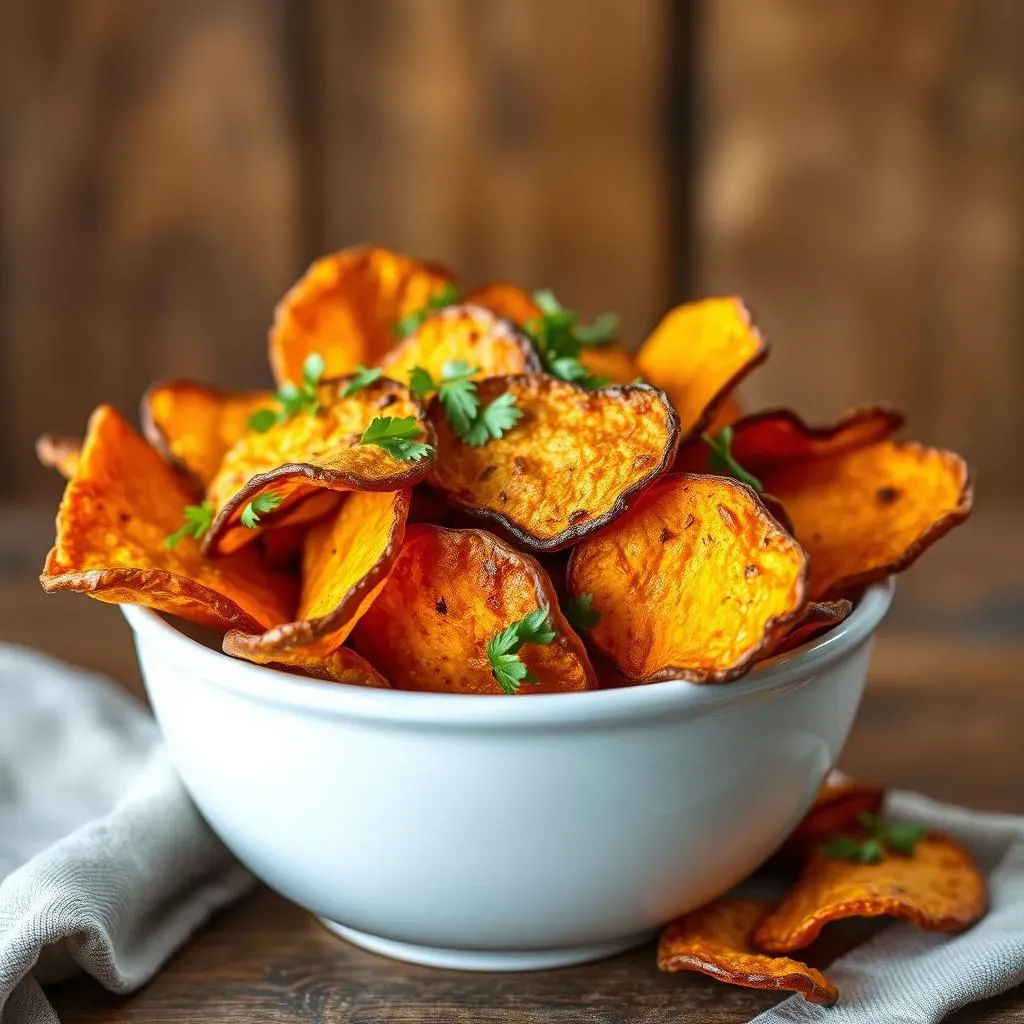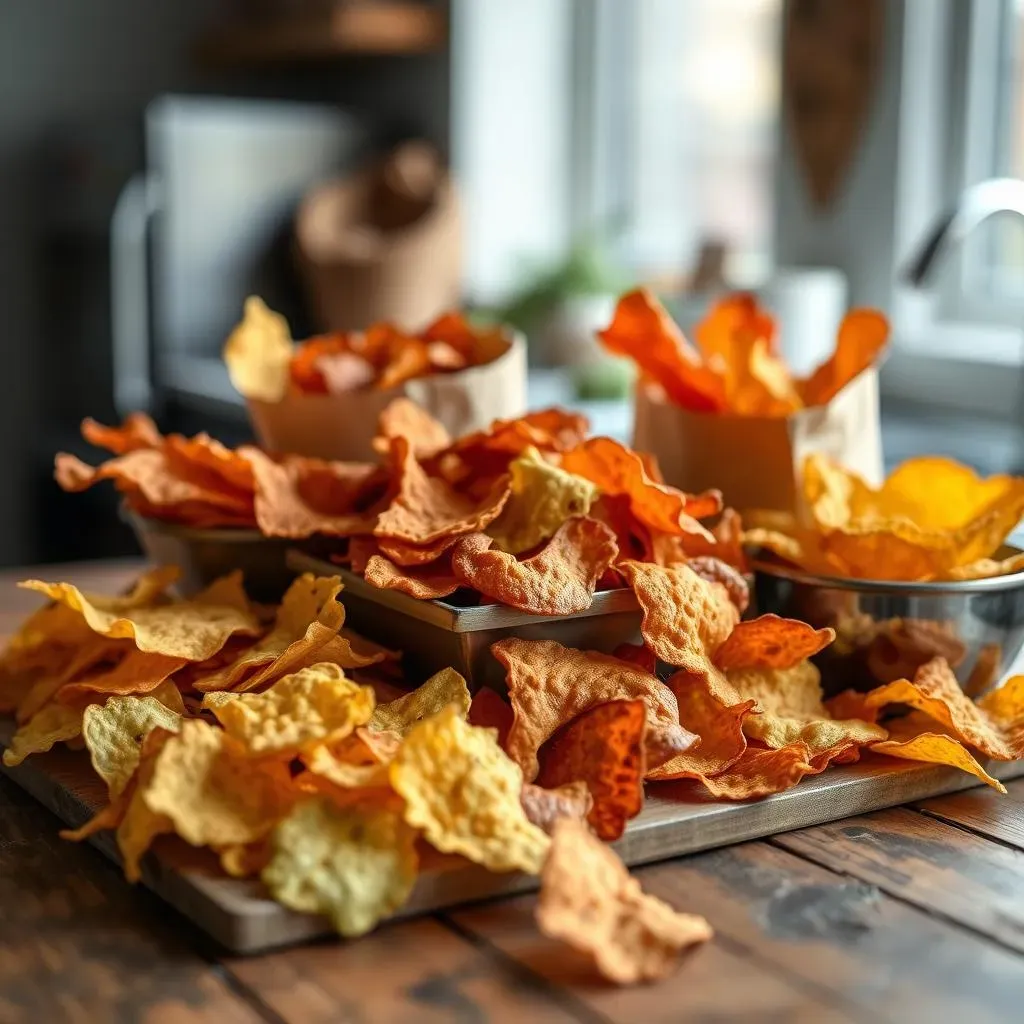Table of Contents
Let's be honest, the crunchy, salty satisfaction of a good chip is hard to resist. But those satisfying snacks often come with a hefty dose of fat and calories, leaving us feeling guilty after indulging. This article is your guide to navigating the world of "low fat chips" without sacrificing taste or enjoyment. We'll explore the often-confusing nutrition labels, helping you decipher what "low fat" truly means and how to spot misleading marketing. Get ready to discover exciting alternatives to traditional potato chips – think baked veggie chips, crunchy bean-based snacks, and even homemade options. We'll equip you with the knowledge and recipes to create your own healthy, low-fat chips, perfectly tailored to your taste preferences. By the end, you'll be a low-fat chip expert, confidently selecting and creating snacks that satisfy your cravings without derailing your health goals. So, ditch the guilt and get ready to enjoy the perfect crunch!
Decoding the Nutrition Label: Finding Truly Low Fat Chips

Decoding the Nutrition Label: Finding Truly Low Fat Chips
Understanding "Low Fat" Claims
Let's face it, "low fat" can be a sneaky marketing term. Manufacturers aren't always playing fair. A chip bag might boast "low fat," but a closer look at the serving size reveals it's tiny! You might eat three servings before you realize it, negating any "low fat" benefit. Always check the serving size and calculate the total fat per serving you actually consume.
Don't just focus on the total fat grams; look at the *type* of fat. Saturated and trans fats are the bad guys. They raise your cholesterol and increase your risk of heart disease. Unsaturated fats, on the other hand, are generally healthier. Look for chips that are low in saturated and trans fats.
Nutrition Fact Focus | What to Look For |
|---|---|
Serving Size | Realistic portion size, not a tiny sliver |
Total Fat (grams) | Aim for under 3 grams per serving |
Saturated Fat (grams) | As low as possible; ideally less than 1 gram |
Trans Fat (grams) | Zero grams is the goal |
Beyond Fat: The Whole Picture
Okay, so we've tackled fat. But a truly healthy chip considers the bigger picture. What about sodium? High sodium leads to water retention and can increase blood pressure. Check the sodium content; you want it to be as low as possible. High fiber is your friend, keeping you full and satisfied. Look for chips with at least 2 grams of fiber per serving.
And don't forget about added sugars! Many "healthy" chips sneak in extra sugar to boost flavor. Check the ingredients list; you shouldn't see sugar listed early on. Ideally, choose chips with no added sugars.
- Check the sodium content (aim for under 150mg per serving).
- Look for added fiber (2 grams or more is a bonus).
- Avoid added sugars!
Ingredient Sleuthing: What's Really Inside?
"Natural flavors" might sound good, but they can be a mystery. The best approach is to choose chips with recognizable ingredients. Simple is better! Avoid anything with long lists of unpronounceable chemicals or additives. Look for chips made with whole foods like real vegetables or legumes.
Pay close attention to the order of ingredients listed. The first few ingredients are the ones that make up the largest portions of the product. If sugar or unhealthy oils are high on the list, that’s a red flag. Choose chips where the primary ingredients are recognizable and wholesome.
"A label is a window into what's inside. Choose wisely." - Anonymous Nutritionist
Low Fat Chip Alternatives: Beyond the Potato

Low Fat Chip Alternatives: Beyond the Potato
Beyond the Humble Potato: A World of Low-Fat Chip Options
Let's break free from the potato! The world of low-fat chips extends far beyond the classic spud. Think vibrant veggie chips made from sweet potatoes, beets, or even kale. These options often boast a higher fiber content and a natural sweetness, making them a satisfying and nutritious alternative. You'll find a variety of flavors and textures, from the earthy sweetness of beet chips to the slightly bitter kick of kale. Experiment and find your new favorites!
Then there are the legume-based chips. Think crunchy chickpeas or lentils, transformed into satisfying snacks. These chips are packed with protein and fiber, keeping you full and energized. They offer a unique texture and a slightly nutty flavor profile. This is a fantastic alternative to potato chips, especially if you're looking to increase your protein intake.
- Veggie Chips (sweet potato, beet, parsnip, kale)
- Legume Chips (chickpea, lentil)
- Fruit Chips (apple, banana, plantain)
Exploring Different Textures and Flavors
Don't limit yourself to the usual salty crunch! Low-fat chips come in a surprising variety of textures and flavors. Some brands offer baked chips with a lighter, crispier texture compared to fried versions. Others achieve a satisfying crunch without added oils through innovative production methods. Experiment with different brands and flavors to find your perfect match. You might discover a new favorite that rivals your old potato chip addiction!
Consider exploring international flavors. Many cultures offer unique and delicious chip alternatives. Think of the vibrant spices of plantain chips from the Caribbean or the tangy zest of seaweed snacks from Asia. These options not only offer a delicious twist but also introduce you to new ingredients and culinary traditions. Embrace the adventure of exploring new tastes and textures!
Chip Type | Texture | Flavor Profile |
|---|---|---|
Baked Sweet Potato Chips | Crispy | Sweet and slightly earthy |
Roasted Chickpea Chips | Crunchy | Nutty and savory |
Plantain Chips | Crisp | Sweet and slightly savory |
Making Your Own Low Fat Chips: Recipes and Tips

Making Your Own Low Fat Chips: Recipes and Tips
The Magic of Homemade: Why DIY Low-Fat Chips Rock
Forget those processed bags of mystery ingredients! Making your own low-fat chips gives you complete control over the ingredients, ensuring they're as healthy as you want them to be. You can experiment with exciting flavor combinations and textures, finding your perfect chip nirvana. Plus, homemade chips are often cheaper than store-bought, especially if you're buying in bulk. You'll save money and calories, a double win!
It's easier than you think! You don't need fancy equipment or culinary skills. A simple oven and a few basic ingredients are all you need to whip up a batch of delicious, low-fat chips. And the best part? You can customize them to your heart's content, experimenting with different spices, herbs, and even healthy sweeteners. Get creative!
- Complete control over ingredients
- Cost-effective
- Endless flavor possibilities
Simple Sweet Potato Chips: A Recipe for Success
Sweet potatoes are naturally sweet and packed with nutrients, making them a perfect base for low-fat chips. Thinly slice the potatoes (a mandoline slicer is a game-changer!), toss them with a little olive oil, your favorite spices (think paprika, garlic powder, onion powder), and bake until crispy. It's that simple! You can even experiment with different spice blends – a smoky chipotle, a zesty lime and chili, or a classic sea salt.
Remember, the key is to use minimal oil. A light coating is all you need to achieve that satisfying crunch. Don't overcrowd the baking sheet; this ensures even cooking and prevents soggy chips. And don't be afraid to experiment! Add a sprinkle of nutritional yeast for a cheesy flavor, or try herbs like rosemary or thyme for an aromatic twist.
Ingredient | Quantity |
|---|---|
Sweet Potatoes | 2 large |
Olive Oil | 1 tablespoon |
Paprika | 1 teaspoon |
Garlic Powder | 1/2 teaspoon |
Salt | To taste |
Beyond Sweet Potatoes: More Homemade Chip Ideas
Once you've mastered the sweet potato chip, the possibilities are endless! Experiment with other vegetables like parsnips, beets, or even zucchini. Each vegetable offers a unique flavor and texture, resulting in a diverse range of chip experiences. You can also try making chips from chickpeas or lentils. Simply toss them with oil and spices, then roast until crispy. These are packed with protein and fiber, making them a super healthy snack option.
Remember to always keep an eye on your chips while they're baking to prevent burning. The cooking time will vary depending on your oven and the thickness of your slices. Start checking for crispness around the 15-minute mark, and adjust as needed. Once they’re golden brown and crispy, remove them from the oven and let them cool completely before enjoying. Enjoy the fruits (or vegetables!) of your labor!
"The best things in life are homemade." - Unknown
